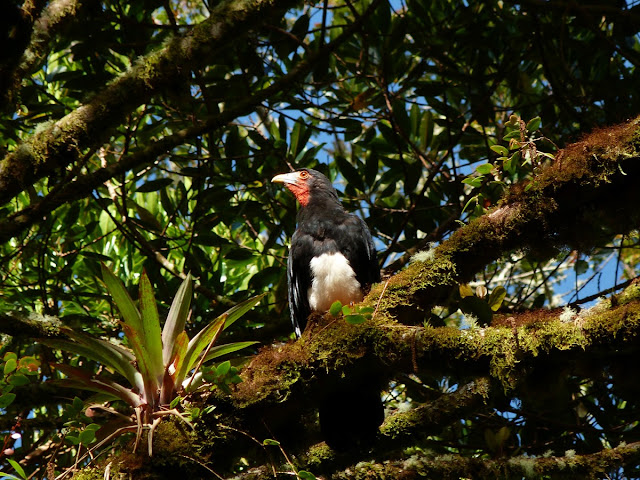Red-throated Caracara in Los Quetzales, a report by Jean Maurice Posner

El dia 14 de Marzo se observó esta Red-throated Caracara perchada y emitiendo su llamado continuamente en el sendero de las cabañas de Los Quetzales, arriba de Guadalupe. Mi altímetro marcaba aproximadamente 2200 msnm; el día era claro y despejado aprox 9 a.m. y la temperatura cerca de 14º. Abel de quetzal lodge se encontraba con nosotros como guía local. This is the first record of Red-throated Caracara in Chiriquí since the 1982 Ridgely records from Punta Burica, and the first time it's been seen at such a high elevation. It persists on the Bocas side, with a 1993 record from Río Teribe, but that's also well in the lowlands.





